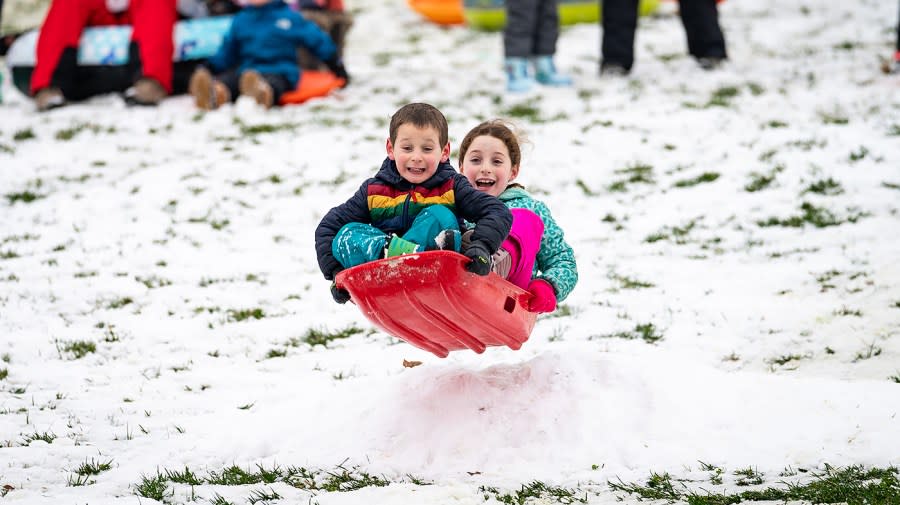Will remote learning make snow days a thing of the past?

The nation is bearing the brunt of a week of winter weather, but not every American student has managed to escape class.
Snow days, a nostalgic part of youth for many adults, have been chipped away by remote learning in many districts, especially since the pandemic.
There’s no one-size-fits-all approach because school leaders and experts say the decision between a day off and online classes comes down to multiple factors, such as the population the school serves and how well-prepared a district is to go virtual.
“I think that our parents definitely like the traditional snow day — not all, but there’s some sense of normalcy with that,” said Sharonica Hardin-Bartley, superintendent of the School District of University City in Missouri.
Hardin-Bartley told The Hill her school has incorporated five traditional, child-beloved snow days into its schedule, but beyond those, the students will have to go to remote learning.
“[Parents] would much rather have [an online] day versus having school go into June,” she said.
Thousands of schools across the country experienced snow days this past week multiple winter storms and, in many cases, subzero temperatures. Even states that don’t typically have to deal with much snow and ice felt the impact, including Alabama, Arkansas and Texas, where more than 400,000 students in the Houston and the Dallas-Forth Worth areas had classes canceled.
Sometimes the biggest opponents of going to remote learning are parents who think their children should get to experience sledding and building snowmen on what was meant to be school day.
“Parents go back and they’re like, ‘Oh, when I was a kid, we had snow days,’ or, ‘We had cold days and it was just …” — they just look back with such fond memories of what they did during snow days that when school starts talking about having remote snow days, a lot of the parents are in opposition just because they’re so memorable or remembering what they went through as kids,” said Rick Ferdig, a professor of educational technology at Kent State University.
In many cases, the decision of canceled vs. remote learning is determined entirely by location.
Chase Christensen, superintendent of Sheridan County School District #3 in Wyoming, said Monday is the first time his schools had a day off completely due to weather after the pipes froze over the weekend because of the weather.
“We try very hard not to have any snow days. We tried to push everything towards remote learning days just because it’s so difficult to find a good day to make up an actual snow day,” Christensen said.
For students, he said, the responses are mixed.
“Anytime there’s the possibility for a snowy day, students are getting excited about it,” Christensen said, adding when the school goes remote for snow, they typically try to let the students log off early.
“If they’re working hard, they get done by 1 o’clock, and that allows for some of those more traditional snow day activities where, you know, families can go take advantage of some snow and go sledding or play in the pasture, those types of things. And so I think we’ve been able to strike that balance with our students,” he added.
Christensen’s district is also already on a four-day school week, so he says most students prefer remote learning days for snow instead of coming in on a Friday.
Even though schools and states had to adapt to remote learning during COVID-19, some laws prevent schools from switching to it when weather-related closures occur.
Thomas Smith, principal of Bishop McCort Catholic High School, a private school in Pennsylvania, said that under state law, the school is not allowed to do remote learning days since they switched to a four-day schedule.
“At the end of the day that works for us, because we are working on a four-day school week. We can just add a day at the end of the week, and we got it made up,” Smith said.
All the district leaders who spoke with The Hill agreed the decision between a day off and remote learning depends on the school and should be based on the communities it serves.
“It just depends on your school and where you’re at and the clientele that you service in your school, whether it be public or private,” Smith said. “I think that it all works too for the most part at the end of the day, and it’s just a matter of choice in regard to how you want to handle that snow day as a makeup or as a flexible instruction.”
For the latest news, weather, sports, and streaming video, head to The Hill.
